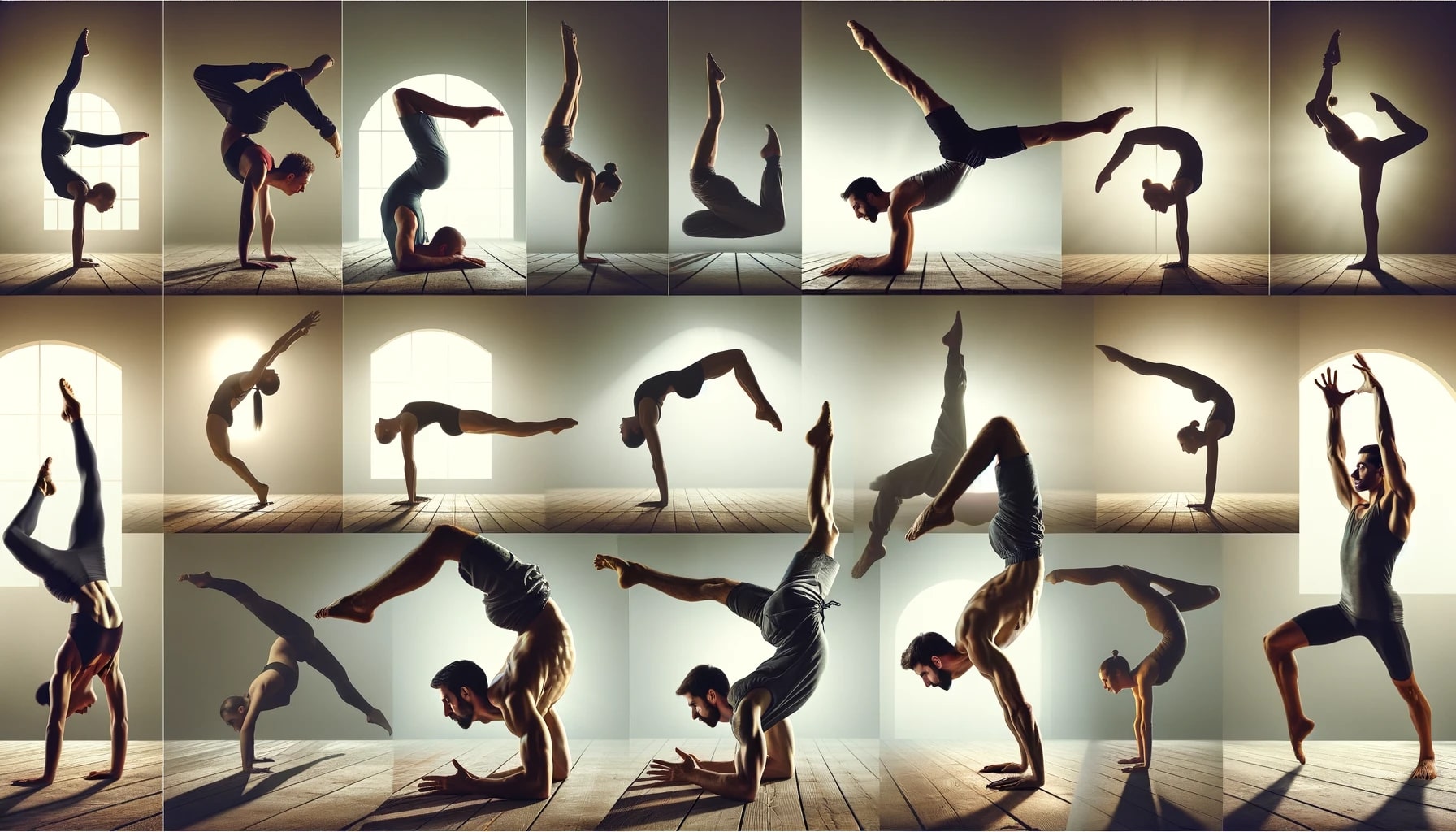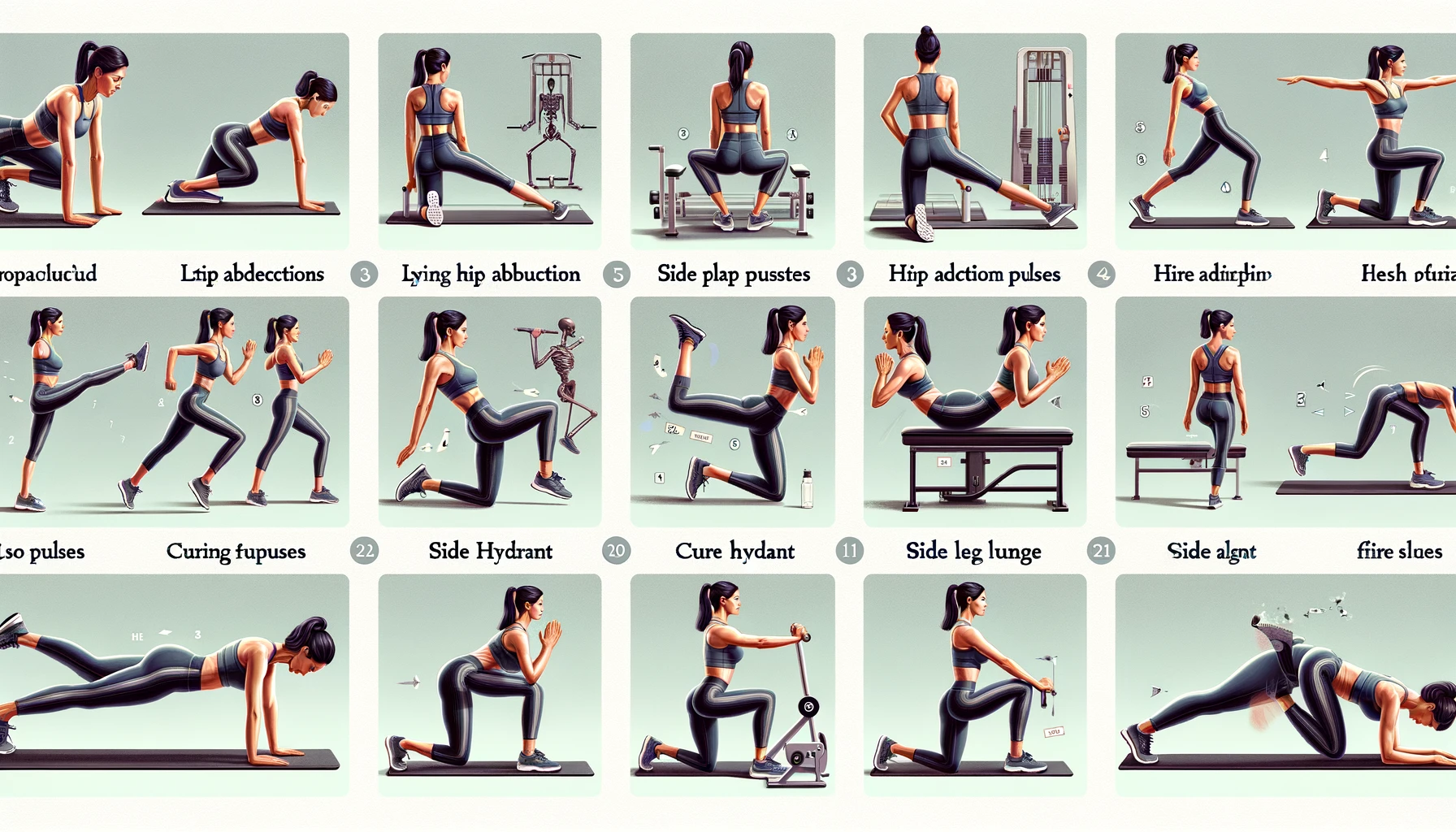Sarvangasana, commonly known as the Shoulder Stand, is a revered yoga pose held in high regard by yogis across the globe. Its name is derived from the Sanskrit words “Sarvanga,” meaning “all parts,” and “asana,” meaning “pose.” This implies that the pose benefits all parts of the body, a testament to its comprehensive nature and the variety of health benefits it offers 01.
- Also Known As: Supported Shoulderstand
- Targets: Shoulders and neck
- Equipment Needed: Folded blankets, yoga mat
- Level: Intermediate
Content Outline
What is Sarvangasana?
Sarvangasana, or the Shoulder Stand, is often referred to as the “queen of all yoga poses.” It is an inverted pose that requires you to balance your entire body on your shoulders. The pose involves lifting your legs and hips up while your upper body remains grounded on the floor, forming an angle of about 90 degrees.

How to Perform Sarvangasana (Steps)
Before we dive into the benefits of this powerful pose, it’s crucial to understand how to perform it correctly to gain maximum benefits and avoid any potential injuries:
- Start by lying flat on your back with your legs together and your arms by your sides.
- Using your abdominal muscles, lift your legs off the floor to a 90-degree angle.
- Push your hands into the floor, and use your abdominal muscles to lift your hips off the floor.
- Place your hands on your lower back for support, keeping your elbows on the floor.
- Gradually straighten and raise your legs towards the ceiling until your torso and legs are perpendicular to the floor.
- Keep your body aligned, your chin tucked into your chest, and your eyes on your toes.
- Hold the pose for as long as comfortable, starting with a few seconds and working up to a minute or longer.
- To release, lower your knees towards your forehead, release your hands from your back, and gently roll your spine back onto the floor, making sure to keep your head down.

The Health Benefits of Sarvangasana
Here’s a table summarizing the health benefits of Sarvangasana:
| Health Benefit | Description |
|---|---|
| Improved Circulation | Boosts blood circulation to the heart and brain, supplying more oxygen and nutrients. |
| Enhanced Digestion | Stimulates the abdominal organs, aiding digestion and alleviating issues like constipation. |
| Thyroid Regulation | Puts pressure on the neck region, stimulating the thyroid gland and helping balance metabolism. |
| Reduced Anxiety and Stress | Encourages deep breathing and relaxation, reducing stress and promoting mental clarity. |
| Strengthened Upper Body | Strengthens the shoulders, upper back, and core, improving stability and posture. |
Variations of the Shoulderstand Pose
The Shoulderstand pose can be tailored to better fit your physical capabilities and personal preferences.
Duration of hold
- Beginners: 30 seconds–1 minute
- Intermediate: 1–3 minutes
- Advanced: 3–6 minutes

Here are some variations you might find useful:
Use of Looped Strap for Alignment In case your elbows tend to drift towards the mat’s edges while in the pose, a looped strap around your upper arms can help maintain them at shoulder-width distance. Precisely measure the strap’s length before placing it around your upper arms prior to transitioning into the Plow pose.
Less Steep Leg Elevation If achieving a 90-degree angle with your legs is challenging, it’s perfectly acceptable to raise them to a lesser degree. Even an angle of 45 degrees can still offer a beneficial stretch to your neck and shoulder region.
Diverse Leg Configurations There is a multitude of variations possible for leg positioning during the Shoulderstand. For instance, you could form a wide “V” shape, similar to the Cobbler’s pose (Baddha Konasana), or adopt a cross-legged position reminiscent of the Lotus pose. Modifying your leg position allows you to add variety to the Shoulderstand pose while still reaping its benefits.
Simplified Alternatives for Novices If you feel the Shoulderstand is currently beyond your reach, consider the Supported Bridge pose with a block placed under the sacrum and your legs elevated straight up. The Legs-up-the-Wall Pose is another suitable substitute, particularly if you prefer to abstain from inversions during menstruation.
What is the difference between Sirsasana and Sarvangasana?
Sirsasana and Sarvangasana are two different but complementary yoga poses. Both are inversions, which means they involve raising the legs above the head, but they are performed in different ways and provide different benefits.

Here’s a table highlighting the differences between Sirsasana and Sarvangasana:
| Aspect | Sirsasana (Headstand) | Sarvangasana (Shoulder Stand) |
|---|---|---|
| Nickname | King of asanas | Queen of asanas |
| Body Position | Balancing on the crown of the head with the help of arms and elbows | Lifting the body vertically, supported by shoulders and upper arms with hands on the lower back |
| Strength Required | Requires substantial upper body strength and balance | Generally requires less strength than Sirsasana, more emphasis on balance |
| Stimulation | Directly stimulates the brain and the pituitary gland | Stimulates the thyroid gland due to the chin lock |
| Key Benefits | Generally requires less strength than Sirsasana, with more emphasis on balance | Increases blood flow to the heart, improves digestion, and helps balance the metabolic functions |
| Contraindications | Not recommended for individuals with high blood pressure, certain heart conditions, neck issues, or eye problems like glaucoma | Generally considered safer than Sirsasana but should still be avoided by those with high blood pressure, certain heart conditions, or neck issues |
Steering Clear of Common Pitfalls in Shoulderstand Pose
To avoid injury and ensure you reap the full benefits of the Shoulderstand pose, it’s important to steer clear of these common errors:
Incorrect Alignment A frequent mistake is to perform the Shoulderstand with the buttocks protruding and feet positioned above the forehead rather than directly above the hips. This misalignment disrupts the balance of the entire pose. To remedy this, draw your shoulder blades firmly into your back, ensuring your heels remain directly above your hips.
Failure to Engage Your Core Failure to maintain an engaged core during the pose can lead to difficulties in fully elevating your hips and walking your hands up your back. Make a conscious effort to activate your core muscles throughout the entire pose.
Head Rotation Maintaining a forward gaze is a key aspect of proper Shoulderstand form. Turning your head, perhaps to observe others or watch the instructor, puts your neck at risk of injury. If needed, close your eyes to resist the urge to look around.
Precautions and Safety Measures for the Shoulderstand Pose
This pose should be avoided if you’re dealing with a neck injury or certain conditions. These include high blood pressure, glaucoma, retinal detachment, recent dental bone grafts, or any other condition where inverting your head below your heart is not recommended.
The use of folded blankets can help mitigate the risk of forcing your neck into an extremely flexed position, which could lead to muscle strain or the formation of bone spurs. In severe cases, there’s a risk of injuring a cervical disc or even causing a neck fracture, especially if you have osteoporosis.
It’s crucial to listen to your body while practicing the Shoulderstand. If you experience any discomfort or pain, immediately cease the pose. For beginners, it might be advisable to hold this pose for only one or two breaths. On the other hand, more experienced yogis may be able to maintain the pose for up to 10 breaths.
Conclusion
Sarvangasana, the Shoulder Stand, is a holistic yoga pose that offers a myriad of health benefits ranging from improved circulation and digestion to enhanced mental well-being. With regular practice, it can be a potent tool in your yoga fitness journey. Remember, always listen to your body, practice within your limits, and prioritize alignment and safety over depth.









I am not sure where youre getting your info but good topic I needs to spend some time learning much more or understanding more Thanks for magnificent info I was looking for this information for my mission
I loved you better than you would ever be able to express here. The picture is beautiful, and your wording is elegant; nonetheless, you read it in a short amount of time. I believe that you ought to give it another shot in the near future. If you make sure that this trek is safe, I will most likely try to do that again and again.
It was great seeing how much work you put into it. Even though the design is nice and the writing is stylish, you seem to be having trouble with it. I think you should really try sending the next article. I’ll definitely be back for more of the same if you protect this hike.
Cialis 20 Mg Precio Farmacia Guadalajara
(Moderator)
Cialis 5 mg prezzo tadalafil 5 mg prezzo cialis 5 mg prezzo
Comprar Cialis En Amazon
Excuse for that I interfere … At me a similar situation. Let’s discuss. Write here or in PM.
Cialis 5 mg prezzo prezzo cialis 5 mg originale in farmacia cialis 5 mg prezzo
What’s up to all, how is everything, I think every one is getting more from this website, and your views are nice for new visitors.
https://secure.squirtingvirgin.com/track/MzAxODgyLjUuMjguMjguMC4wLjAuMC4w
Pretty! This has been a really wonderful article. Many thanks for supplying this information.
cloudbet plinko
Aviator Spribe играть на евро
I think, that you are not right. I am assured. Let’s discuss it.
Добро пожаловать в захватывающий мир авиаторов! Aviator – это увлекательная игра, которая позволит вам окунуться в атмосферу боевых действий на небе. Необычные графика и захватывающий сюжет сделают ваше путешествие по воздуху неповторимым.
Наслаждайтесь азартом с игрой Aviator Spribe играть на планшете и погружайтесь в азартное приключение!
Aviator игра позволит вам почувствовать себя настоящим пилотом. Вам предстоит совершить невероятные маневры, выполнять сложные задания и сражаться с противниками. Улучшайте свой самолет, чтобы быть готовым к любым ситуациям и становиться настоящим мастером.
Zeolite Heavy Equipment LLC is a company specializing in the supply and servicing of high-quality industrial equipment. We offer a wide range of equipment for various industries, including construction, mining, agriculture, and more. Our goal is to provide our customers with reliable and efficient solutions for their businesses.
Hello colleagues, its fantastic piece of writing concerning cultureand completely explained, keep it up all the time.
payid withdrawal pokies australia
официальный сайт кэт казино
https://7sps.ru/
This site is fantastic. The splendid substance shows the administrator’s devotion. I’m astounded and anticipate more such incredible substance.
An impressive share! I’ve just forwarded this onto a colleague who had been doing a little research on this. And he actually ordered me breakfast due to the fact that I discovered it for him… lol. So allow me to reword this…. Thanks for the meal!! But yeah, thanks for spending some time to discuss this matter here on your site.
booi casino no deposit bonus
Nice post. I learn something new and challenging on blogs I stumbleupon everyday. It’s always interesting to read through content from other authors and use a little something from their web sites.
gaming club online casino review 2022
May I simply say what a relief to find an individual who truly understands what they are discussing on the web. You definitely know how to bring an issue to light and make it important. More and more people must read this and understand this side of your story. I can’t believe you’re not more popular given that you surely have the gift.
http://maps.google.tk/url?q=https://didvirtualnumbers.com/tr/
Aviator Spribe играть на планшете
Добро пожаловать в захватывающий мир авиаторов! Aviator – это увлекательная игра, которая позволит вам окунуться в атмосферу боевых действий на небе. Необычные графика и захватывающий сюжет сделают ваше путешествие по воздуху неповторимым.
Aviator Spribe регистрация
Wow, wonderful blog structure! How lengthy have you ever been running
a blog for? you made blogging look easy. The overall
glance of your website is excellent, let alone the content!
You can see similar here sklep online
Wow, marvelous blog format! How long have you ever been running a blog for?
you make running a blog look easy. The full look of your site is great, let
alone the content! You can see similar here ecommerce
I always spent my half an hour to read this webpage’s posts everyday along with a cup
of coffee. I saw similar here: Ecommerce
Wow, marvelous weblog structure! How lengthy have you
ever been blogging for? you make running a blog look
easy. The total glance of your web site is excellent, let alone the content material!
You can see similar here dobry sklep
It’s very interesting! If you need help, look here: ARA Agency
Hello to all, for the reason that I am in fact eager of reading this web site’s post to be updated regularly. It contains good information.
writing service
Hi there! Do you know if they make any plugins to help with Search Engine Optimization? I’m trying to get my
blog to rank for some targeted keywords but I’m not seeing very good gains.
If you know of any please share. Cheers! You can read similar blog here:
Sklep
Hi! Do you know if they make any plugins to assist with Search
Engine Optimization? I’m trying to get my blog to rank for some targeted keywords but I’m not seeing
very good results. If you know of any please share.
Thank you! You can read similar text here: Sklep online
Hey there! Do you know if they make any plugins to assist with Search Engine Optimization? I’m trying to get my blog
to rank for some targeted keywords but I’m not seeing very good
gains. If you know of any please share. Kudos! You can read similar art here:
Sklep online
Производимые торгово-промышленным объединением тренажеры для кинезитерапии https://trenazhery-dlya-kineziterapii.ru и специально разработаны для восстановления после травм. Устройства имеют интересное предложение стоимости и качества.
Предлагаем очень недорого аналог МТБ 2 с облегченной конструкцией. В ассортименте для кинезитерапии всегда в реализации варианты блочного и нагружаемого типа.
Выпускаемые тренажеры для реабилитации обеспечивают мягкую и безопасную тренировку, что особенно важно для пациентов в процессе восстановления.
Станки обладают изменяемым сопротивлением и уровнями нагрузки, что позволяет индивидуализировать занятия в соответствии с потребностями каждого пациента.
Все изделия подходят для кинезитерапии по методике профессора Сергея Бубновского. Оснащены рукоятками для комфортного выполнения тяг сидя или стоя.
Amazing issues here. I’m very glad to see your article. Thank you a lot and I’m taking a look forward to touch you. Will you please drop me a e-mail?
http://www.glat.kr/bbs/board.php?bo_table=free&wr_id=481227
Good day! Do you know if they make any plugins to assist with SEO?
I’m trying to get my blog to rank for some targeted keywords
but I’m not seeing very good results. If you know of any please share.
Appreciate it! You can read similar text here: Hitman.agency
Hi there! Do you know if they make any plugins to help with SEO?
I’m trying to get my website to rank for some targeted keywords but I’m not seeing very good
results. If you know of any please share. Many thanks!
You can read similar blog here: List of Backlinks
Российский производитель продает диски на ресурсе diski-dlya-shtang.ru для напряженной работы в коммерческих тренажерных клубах и в домашних условиях. Отечественный завод создает цельнометаллические диски разного посадочного диаметра и любого востребованного веса для наборных гантелей. Советуем к приобретению прорезиненные тренировочные диски для силовых занятий. Они не выскальзывают, не гремят и более безопасны. Производимые изделия не нуждаются в постоянном обслуживании и рассчитаны на длительную эксплуатацию в центрах. Реализуем обширный ассортимент олимпийских дисков с разным видом покрытия. Купите веса с оптимальной массой и посадочным диаметром по низким ценам напрямую у компании-производителя.
I delight in, result in I found exactly what I used to be taking a look for. You have ended my four day long hunt! God Bless you man. Have a great day. Bye
#be#jk3#jk#jk#JK##
временный номер телефона США
В нашем мире, где диплом становится началом удачной карьеры в любой сфере, многие ищут максимально быстрый и простой путь получения качественного образования. Необходимость наличия документа об образовании сложно переоценить. Ведь именно он открывает дверь перед каждым человеком, желающим начать трудовую деятельность или продолжить обучение в университете.
В данном контексте наша компания предлагает максимально быстро получить этот важный документ. Вы сможете заказать диплом, что является отличным решением для всех, кто не смог закончить образование, утратил документ или хочет исправить свои оценки. дипломы выпускаются с особой тщательностью, вниманием ко всем деталям. В итоге вы получите документ, 100% соответствующий оригиналу.
Превосходство подобного подхода состоит не только в том, что вы сможете оперативно получить диплом. Весь процесс организован удобно, с нашей поддержкой. От выбора нужного образца до консультации по заполнению персональных данных и доставки по России — все будет находиться под абсолютным контролем опытных специалистов.
В итоге, для всех, кто хочет найти оперативный способ получить требуемый документ, наша компания предлагает отличное решение. Приобрести диплом – это значит избежать продолжительного процесса обучения и сразу переходить к достижению своих целей: к поступлению в университет или к началу удачной карьеры.
https://diploman-rossiya.com
В нашем мире, где диплом – это начало удачной карьеры в любой сфере, многие ищут максимально быстрый и простой путь получения образования. Необходимость наличия официального документа переоценить попросту невозможно. Ведь именно диплом открывает дверь перед людьми, желающими начать профессиональную деятельность или учиться в каком-либо ВУЗе.
Наша компания предлагает максимально быстро получить этот важный документ. Вы имеете возможность заказать диплом, что является отличным решением для всех, кто не смог завершить образование или потерял документ. диплом изготавливается с особой аккуратностью, вниманием ко всем нюансам, чтобы в итоге получился полностью оригинальный документ.
Превосходство этого решения заключается не только в том, что вы максимально быстро получите диплом. Весь процесс организован комфортно и легко, с нашей поддержкой. Начав от выбора требуемого образца до консультаций по заполнению персональной информации и доставки по России — все будет находиться под полным контролем квалифицированных специалистов.
В итоге, всем, кто ищет быстрый и простой способ получения требуемого документа, наша компания может предложить выгодное решение. Купить диплом – значит избежать долгого процесса обучения и не теряя времени перейти к личным целям: к поступлению в университет или к началу успешной карьеры.
https://diplomanc-russia24.com
В наше время, когда диплом является началом отличной карьеры в любом направлении, многие ищут максимально быстрый путь получения качественного образования. Наличие официального документа сложно переоценить. Ведь диплом открывает дверь перед любым человеком, который хочет начать профессиональную деятельность или продолжить обучение в ВУЗе.
Предлагаем максимально быстро получить любой необходимый документ. Вы можете купить диплом, что будет отличным решением для всех, кто не смог закончить обучение, потерял документ или желает исправить свои оценки. диплом изготавливается аккуратно, с особым вниманием ко всем деталям, чтобы в результате получился полностью оригинальный документ.
Преимущество этого решения состоит не только в том, что можно оперативно получить свой диплом. Весь процесс организовывается удобно, с профессиональной поддержкой. Начиная от выбора нужного образца документа до консультации по заполнению личной информации и доставки в любое место страны — все будет находиться под полным контролем качественных мастеров.
Для тех, кто ищет максимально быстрый способ получить требуемый документ, наша услуга предлагает отличное решение. Заказать диплом – это значит избежать продолжительного обучения и сразу перейти к своим целям, будь то поступление в университет или старт профессиональной карьеры.
https://diploman-russiyan.com
В нашем мире, где диплом является началом отличной карьеры в любом направлении, многие ищут максимально простой путь получения качественного образования. Наличие официального документа переоценить просто невозможно. Ведь диплом открывает двери перед всеми, кто собирается вступить в сообщество квалифицированных специалистов или продолжить обучение в университете.
Предлагаем быстро получить любой необходимый документ. Вы имеете возможность приобрести диплом нового или старого образца, что будет удачным решением для всех, кто не смог закончить обучение или утратил документ. Каждый диплом изготавливается аккуратно, с особым вниманием к мельчайшим деталям. На выходе вы сможете получить 100% оригинальный документ.
Преимущество подобного подхода состоит не только в том, что можно оперативно получить свой диплом. Процесс организован комфортно, с нашей поддержкой. Начав от выбора требуемого образца до консультаций по заполнению личной информации и доставки по стране — все под абсолютным контролем опытных специалистов.
Всем, кто ищет оперативный способ получения требуемого документа, наша компания предлагает отличное решение. Заказать диплом – это значит избежать продолжительного процесса обучения и не теряя времени перейти к достижению собственных целей, будь то поступление в ВУЗ или начало трудовой карьеры.
https://dlplomanrussian.com
На сегодняшний день, когда диплом – это начало удачной карьеры в любом направлении, многие стараются найти максимально быстрый путь получения качественного образования. Необходимость наличия документа об образовании переоценить просто невозможно. Ведь именно он открывает дверь перед любым человеком, желающим вступить в профессиональное сообщество или учиться в каком-либо университете.
Мы предлагаем максимально быстро получить этот важный документ. Вы имеете возможность заказать диплом нового или старого образца, и это будет удачным решением для человека, который не смог закончить обучение, утратил документ или хочет исправить плохие оценки. дипломы выпускаются аккуратно, с особым вниманием ко всем нюансам. В итоге вы сможете получить документ, 100% соответствующий оригиналу.
Превосходство данного решения заключается не только в том, что можно быстро получить диплом. Весь процесс организован удобно, с нашей поддержкой. От выбора нужного образца до консультаций по заполнению персональной информации и доставки по стране — все под абсолютным контролем квалифицированных специалистов.
Таким образом, всем, кто хочет найти быстрый способ получить требуемый документ, наша компания предлагает отличное решение. Купить диплом – значит избежать продолжительного процесса обучения и не теряя времени перейти к своим целям: к поступлению в ВУЗ или к началу трудовой карьеры.
https://diploman-rossiya.com
В нашем обществе, где диплом – это начало успешной карьеры в любой области, многие пытаются найти максимально быстрый и простой путь получения качественного образования. Необходимость наличия документа об образовании трудно переоценить. Ведь диплом открывает дверь перед людьми, желающими начать профессиональную деятельность или учиться в ВУЗе.
В данном контексте мы предлагаем оперативно получить этот важный документ. Вы сможете приобрести диплом, что становится выгодным решением для всех, кто не смог закончить обучение или утратил документ. дипломы производятся с особой тщательностью, вниманием ко всем элементам, чтобы в результате получился полностью оригинальный документ.
Превосходство подобного подхода состоит не только в том, что можно оперативно получить диплом. Процесс организован комфортно, с нашей поддержкой. От выбора требуемого образца до грамотного заполнения личной информации и доставки в любое место страны — все находится под абсолютным контролем опытных мастеров.
Для тех, кто хочет найти оперативный способ получения требуемого документа, наша компания предлагает выгодное решение. Приобрести диплом – значит избежать долгого обучения и не теряя времени переходить к важным целям: к поступлению в ВУЗ или к началу успешной карьеры.
https://dlplomanrussian.com
Сегодня, когда диплом становится началом отличной карьеры в любой сфере, многие ищут максимально простой путь получения качественного образования. Наличие документа об образовании переоценить невозможно. Ведь именно диплом открывает двери перед людьми, стремящимися вступить в профессиональное сообщество или продолжить обучение в высшем учебном заведении.
Предлагаем очень быстро получить этот важный документ. Вы сможете приобрести диплом старого или нового образца, и это становится удачным решением для всех, кто не смог завершить образование или потерял документ. дипломы производятся аккуратно, с максимальным вниманием к мельчайшим элементам, чтобы на выходе получился 100% оригинальный документ.
Преимущество этого решения состоит не только в том, что вы оперативно получите свой диплом. Процесс организовывается удобно и легко, с нашей поддержкой. Начав от выбора необходимого образца диплома до консультаций по заполнению личной информации и доставки в любое место страны — все под полным контролем наших специалистов.
Таким образом, для тех, кто ищет быстрый и простой способ получить требуемый документ, наша компания предлагает отличное решение. Купить диплом – значит избежать длительного процесса обучения и сразу перейти к достижению личных целей, будь то поступление в университет или начало удачной карьеры.
https://dlplomanrussian.com
Heya are using WordPress for your blog platform? I’m new to the blog world but I’m trying to get started and set up my own. Do you require any html coding knowledge to make your own blog? Any help would be really appreciated!
https://controlc.com/80c3d9c3
Keep on writing, great job!
https://privatebin.net/?6213c2ab2fb0721b#Frht2HfaU8c2Aysa7nzXNgT8rrHWfM2KcRpSJvCfZ5ep
Hi i am kavin, its my first occasion to commenting anyplace, when i read this article i thought i could also make comment due to this brilliant piece of writing.
https://zenwriting.net/fastofldxm/h1-b-kupiti-nadiine-sklo-far-farfarlight-v-kiievi-za-dostupnoiu-tsinoiu-b-h1
Купить диплом онлайн без обмана
купить диплом Гознак http://www.diplom-msk.ru .